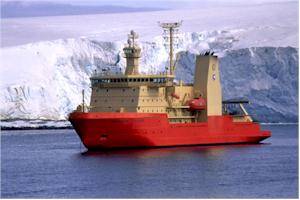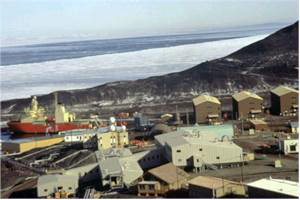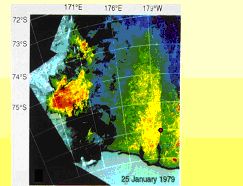Trace Metal-Phytoplankton Interactions in the Ross Sea
Collaborators
Funded by NSF Office of Polar Programs 2005-2008
See the cruise website for realtime updates and community outreach.
Project Summary
The biogeochemistry of cobalt, cadmium and zinc will be investigated in the Ross Sea using voltammetric speciation techniques applied to water column samples and bottle incubations. This proposed study will add a Co, Cd, and Zn trace metal chemistry component to two NSF-OPP funded R/V Palmer cruises to the Ross Sea in 2006 (PIs: DiTullio, Hutchins, Smith, Sedwick, Dunbar, Tortell, Bowie). One of the primary objectives of these cruises is to study the interactions between iron limitation and carbon dioxide utilization/limitation using novel trace metal clean chemostat incubation methods. Because carbon acquisition by marine phytoplankton is dependent on the Zn, Cd, or Co metalloenzyme, carbonic anhydrase, adding Co, Cd, and Zn trace metal analyses to the research program (Saito Lab) should be highly complementary to the cruise objectives. Total dissolved concentrations and chemical speciation analyses will be measured on field samples to ascertain the ambient geochemical conditions as well as on bottle incubation samples to measure chemical transformations and drawdown of these micronutrients. DNA samples will also be collected from the Ross Sea and amplified for genes homologous to ferric reductases. This enzyme has been shown to be involved in the acquisition of ferric iron, including organically chelated forms, but molecular analyses of marine phytoplankton ferric reductases have barely begun. Sequences of these genes will be amplified using polymerase chain reaction and degenerate primers, and clone libraries will be screened for sequences of interest. This study of ferric reductases will also be highly complementary to the cruise research activities focused on iron limitation, and is an important first step towards future analysis of ferric reductase gene expression in environmental samples.


McMurdo Station, Antarctica.

CZCS image of chlorophyll during January in the Ross Sea. Recent research suggests that diatoms often bloom in the western area while the waning bloom in the southern Ross Sea is composed mostly of Phaeocystis.